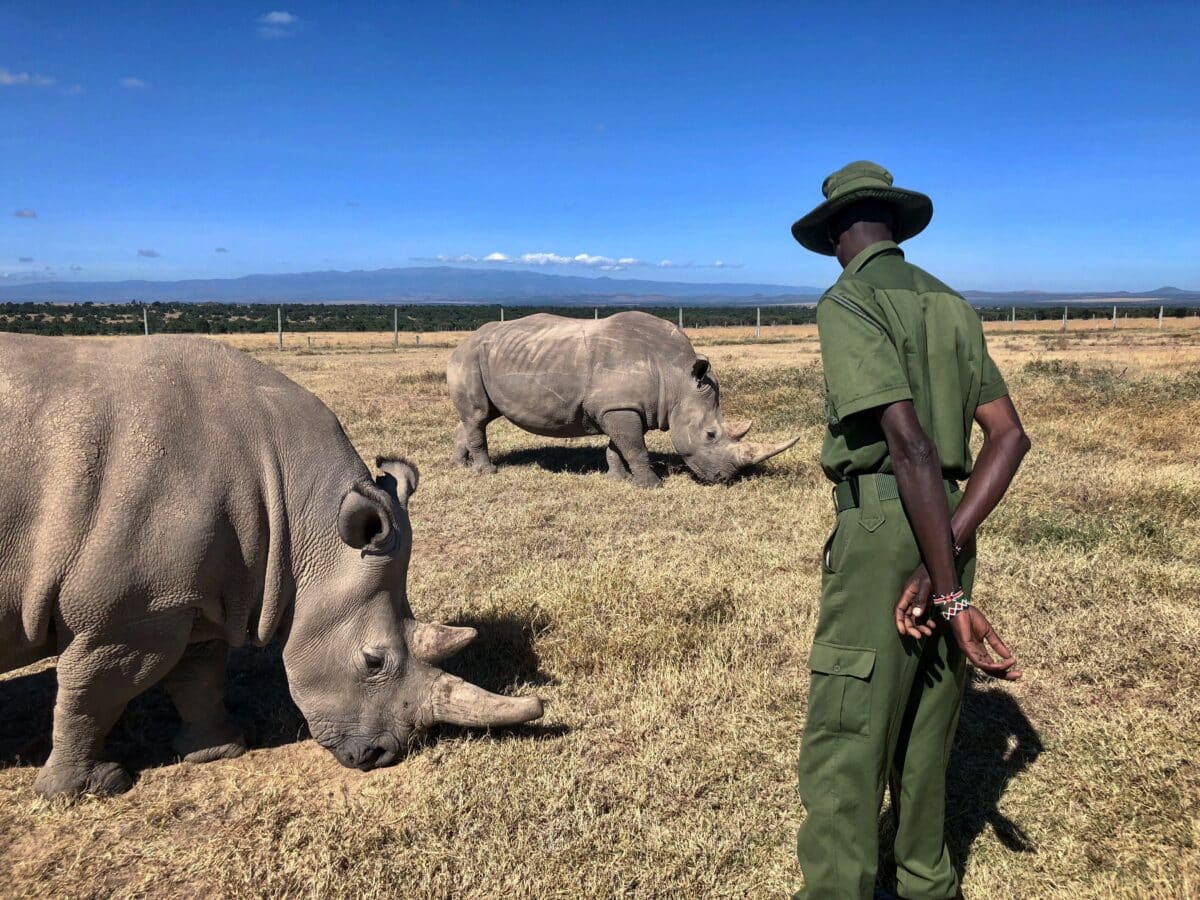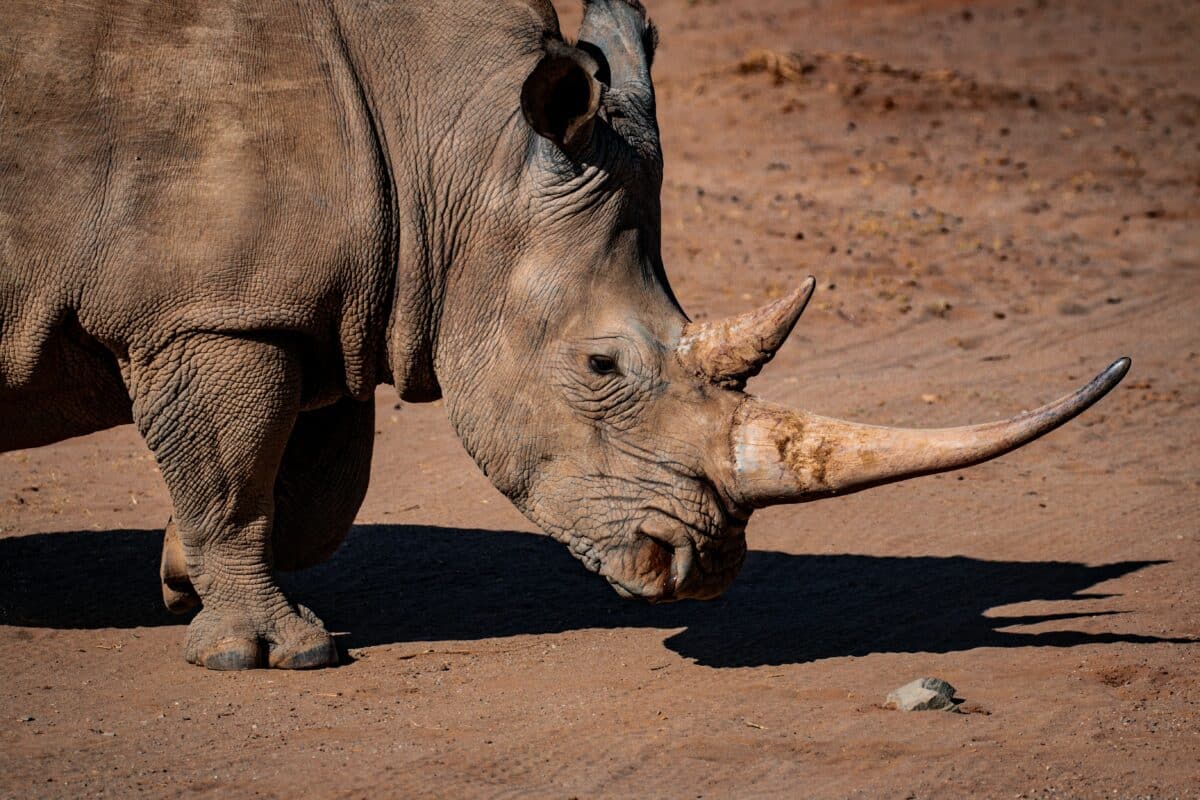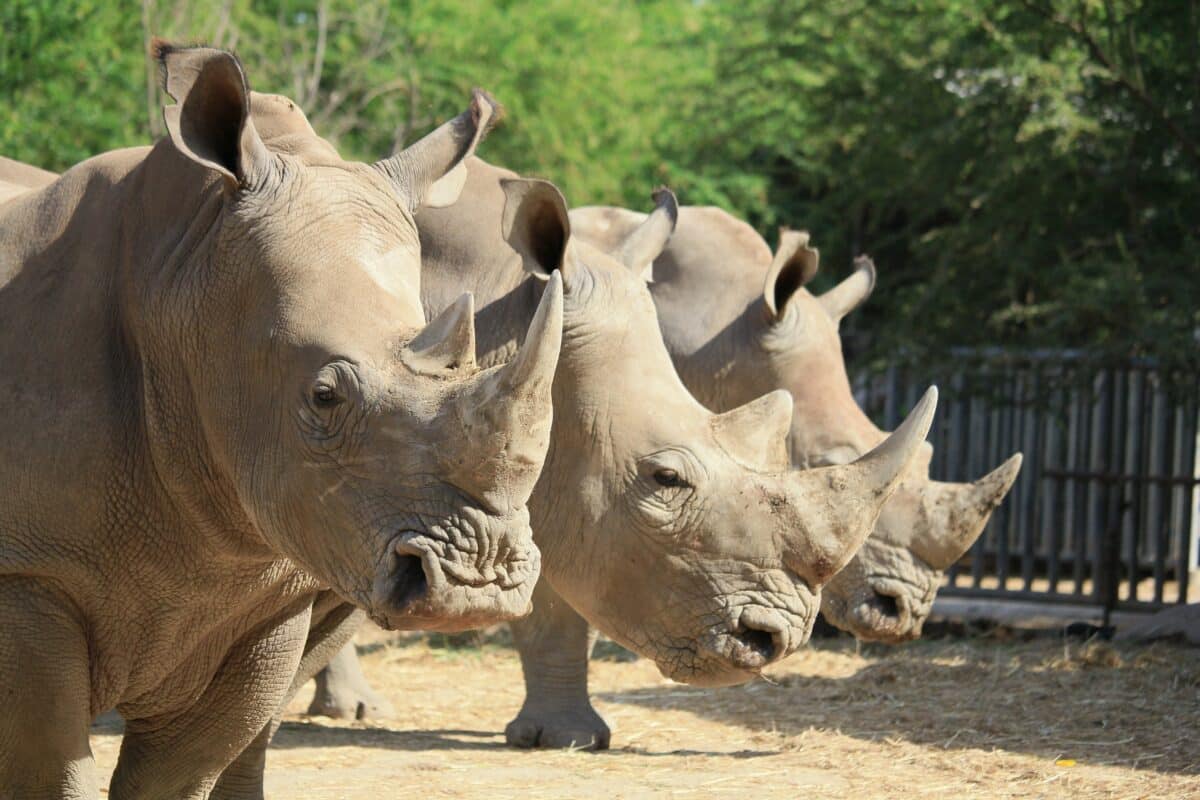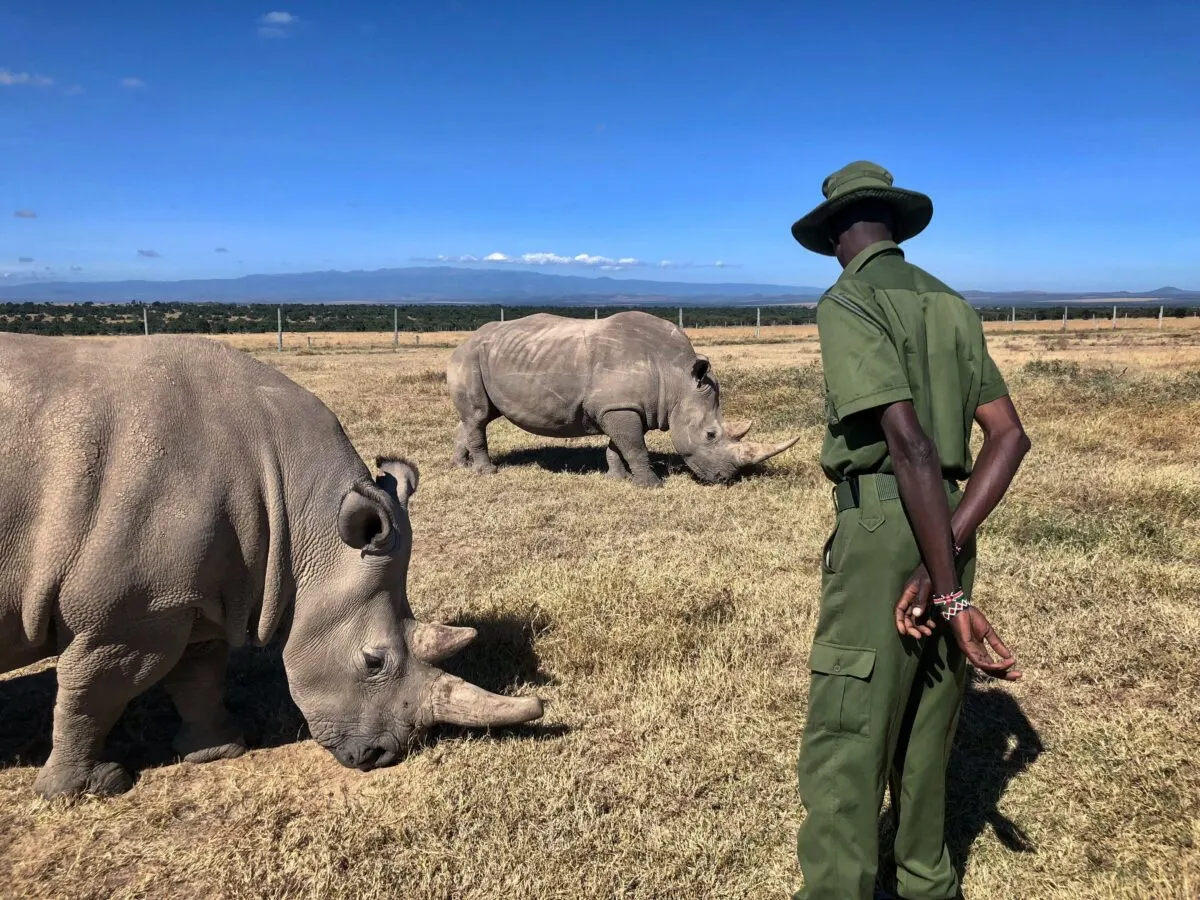South African rhino breeder, John Hume, has launched an auction to sell off his 2,000-strong herd of white rhinos in an online sale starting at $10 million.

Key Points
- South African rhino breeder John Hume is auctioning off his 2,000-strong herd of white rhinos in an online sale starting at $10 million.
- Hume established the Platinum Rhino Project to legalize the trade of rhino horns and protect the animal from poaching.
- The ideal buyer for the auction is someone with the means to keep the breeding project going and a passion for conserving rhinos.
- The white rhino species is classified as “near threatened,” with fewer than 16,000 remaining worldwide, and conserving rhinos is crucial to maintain biodiversity, ecological balance, and sustainable development.
Rhinos to the Highest Bidder

Hume established the Platinum Rhino Project, a 21,000-acre ranch, to legalize the trade of rhino horns. The Platnum Rhino Project started a breeding farm where the breeder could safely saw off the horn from a living rhino and sold on the open market. With the hope of dismantling the black market demand for rhino horns, protecting the animal from poaching.
While Hume successfully sued the South African government in 2017 to reverse a decades-old moratorium on the domestic sale of rhino horns, the overall effort proved less lucrative than he projected. He can no longer afford the upkeep of his crusade.
The ideal buyer for the auction is someone with the means to keep the breeding project going and a passion for conserving rhinos. The white rhino species is classified as “near threatened,” with fewer than 16,000 remaining worldwide.
Rhino horn is primarily in demand in East Asian countries. China and Vietnam are the top markets, where the horns become ingredients for medicinal purposes and to carve figurines.
The poaching crisis of rhinos began in 2008 and peaked between 2013 and 2017, resulting in the slaughter of over 1,000 rhinos annually.
According to the World Animal Foundation, approximately one Rhino is killed every 12 hours.
The Platnum Rhino Project
The Platinum Rhino Project is a 21,000-acre rhino breeding ranch in South Africa. It was established by John Hume, a South African rhino breeder. The project aims to breed and raise rhinos for the purpose of legalizing the trade of their horns, which is banned in most countries.
The idea behind the project is to create a sustainable market for rhino horns. This is done by safely sawing the horns off the living animals and then sell legally on the open market. The ultimate goal of the project is to help conserve the endangered species and reduce poaching.
It is crucial to maintain the breeding program to guarantee the survival of the rhinos as well as the sustainable livelihoods of the individuals who depend on the project. The Platinum Rhino Project provides employment to around 100 people, who on average support four others. This equates to a community of approximately 500 people who rely on the project for their well-being.
Register for the auction here.
Summary of the Rhino

Rhinos are large, herbivorous mammals found in Africa and Asia. There are five species of rhinos: black, white, Indian, Javan, and Sumatran. Rhinos have distinctive keratin horns, the same material as human fingernails. These horns have made rhinos a target for poachers, who sell them on the black market for use in traditional medicine and as a status symbol.
Rhinos also faces threats by habitat loss and human-wildlife conflict. Conservation efforts are underway to protect rhinos and their habitats, including anti-poaching measures, breeding programs, and habitat restoration. The white Rhino is classified as “near threatened,” with fewer than 16,000 remaining worldwide.
Learn more about the Rhino here.
What is the importance of protecting the Rhino?

It is crucial to prevent the Rhino from going extinct because rhinos are an essential part of the ecosystem. Their disappearance can devastate the environment.
Rhinos help maintain grasslands and forest habitats by grazing on vegetation. This creates openings for new growth and helps maintain a balance in the ecosystem.
Additionally, rhinos are essential to local economies as they attract tourists, and their horns have cultural significance in some communities. Losing rhinos can also have a ripple effect on other species that depend on the same habitat, ultimately affecting human well-being.
Therefore, conserving rhinos is crucial to maintain biodiversity, ecological balance, and sustainable development.
Thank you for following along with this article!
Next up in the animal-news world:
- Pregnant Hammerhead Shark Washes Ashore in Alabama
- Discover The Most Massive Gorilla Ever (860 Pounds)
- Watch a Tiger taking on an Elephant in the Wild
- Discover the World’s Most Colossal Anaconda (33-Foot-Long)
- Mom and Daughter Takes Hen and Chicks to the Store in Backpacks - April 24, 2024
- Watch: German Shepherd thinks he’s dying at the grooming salon - April 24, 2024
- Watch: Cats Meet Babies for the First Time - April 24, 2024



